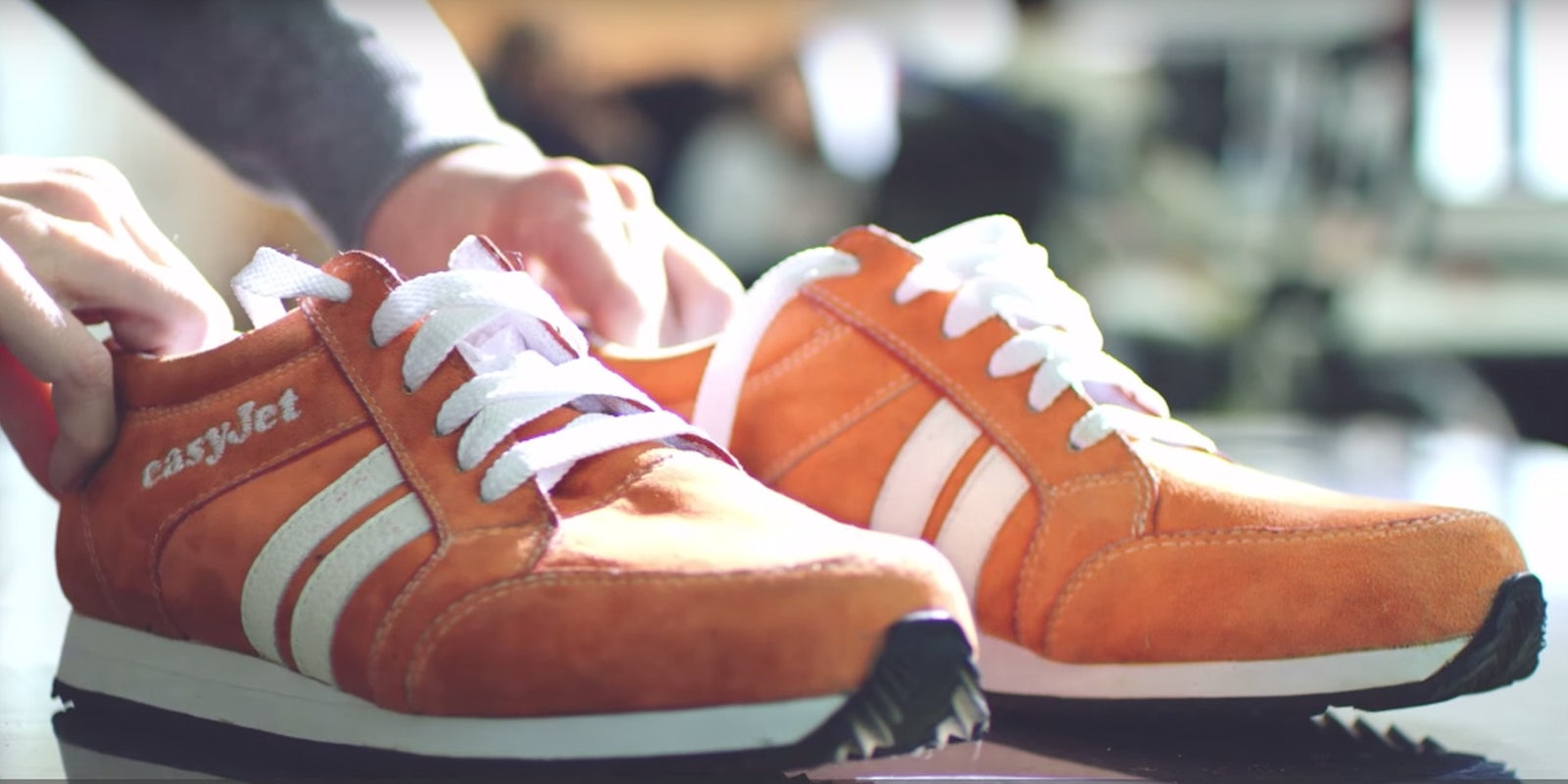Traveling to a new city can require frequently staring at maps. Whether on your phone or in guide books, going heads down to figure out directions can mean missing a lot of the journey along the way.
To help people navigate new cities without getting lost in their phones, EasyJet, the UK budget airline, debuted a prototype of “Sneakairs,” smart shoes for travelers.
Sneakairs, part of the Barcelona Street Project, use Google Maps to give you turn-by-turn directions, but instead of viewing them on your phone, vibrations in the soles of the shoes tell you which way to turn, and when you’ve reached your destination.
Inside a pair of sneakers are two devices, built with open source software, a miniature Arduino clone and Bluetooth LE, all packaged in a 3D-printed plastic case. The devices are placed in the heel of each shoe, and connect wirelessly to your mobile device.
The vibrations are fairly obvious, though not uncomfortable, Wired reports. Left and right shoes vibrate once when you need to turn in either direction, two buzzes on both feet mean you’ve gotten lost, and shoes buzz three times when you’ve arrived at the desired location.
It’s not the first project to use haptic vibrations for navigation. In 2013, Wearable Experiments debuted the Navigate smart jacket that provided directions via LED lights and vibrations. It was only ever a prototype and never made it to stores.
Lechal has smart shoes similar to the ones EasyJet launched, born out of the idea to help visually impaired individuals better navigate the world. Both men and women shoes are currently sold out, but the insoles are available for $159.99.
Wearable technologies are still relatively nascent, and companies are figuring out how and why people will want to use them. There are a number of issues with vibrating shoes, for instance the battery life that is currently just a few hours. And what happens when shoes get wet?
Vibrating navigational shoes won’t necessarily solve the problem of tourists staring at phones; there’s plenty of time to waste on Twitter and Instagram. But the concept is interesting for people who want more intuitive navigation, where devices interact with our person and not just each other.
The Barcelona Street Project is still a concept, but the company hopes to turn it into an actual product that people can purchase through EasyJet to digitally enhance wandering through cities.
H/T Wired


